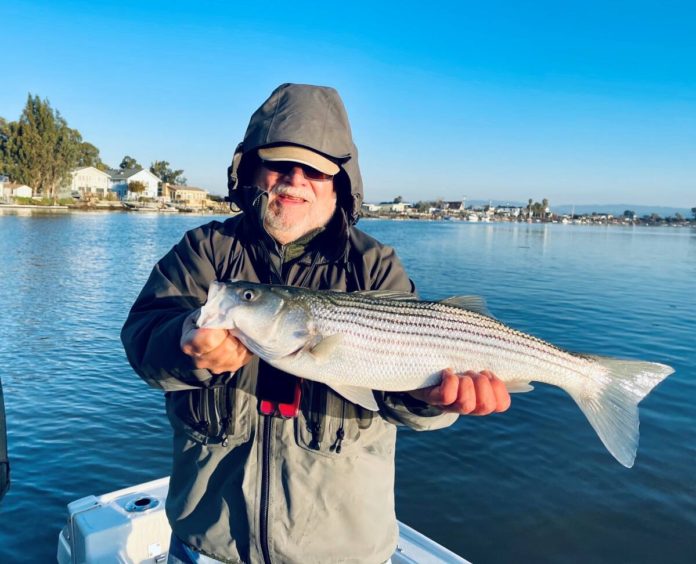Steve Kyle and I spent a delightful morning last week with Capt. Patrick MacKenzie, Sonoma-based fly-fishing guide, on the Napa River and adjacent marshes. We managed to catch and release several striped bass.
It was a lovely early winter morning to observe how nature is restoring the lower reaches and tidal marsh areas of the Napa River, making it easier to imagine what they might have been like before farming and salt-pond mining operations began there in the 19th and 20th centuries.
From several miles south of Highway 21 to the bay, the Napa-Sonoma Marshes Wildlife Area spreads over more than 15,000 acres. Some of it was drained, diked and farmed up until the middle of the last century. Other parts were diked, partially flooded and managed for salt production. Today, a large portion is being restored to natural wetlands so that wildlife will reestablish there.
Patrick, who has spent several years developing his knowledge of the parts that provide habitat for fish, now has season-to-season, tide-to-tide experience that gives him some insight as to where the striped bass might be hanging out. His boat is rigged with all the necessary propulsion and devices that allow him to maneuver from spot to spot.
We moved around a lot, just as the striped bass are prone to do this time of year. And while meandering we saw surprisingly large flocks of wild birds, including several different species of ducks and other waterfowl.
Striped bass, the primary sport fish in these waters, are not native. In 1879, 132 fingerling stripers from the Navesink River, New Jersey, were introduced into San Francisco Bay after a long train ride across the U.S. A few years later an additional shipment was dumped into bay waters. They prospered. By 1889 the numbers were sufficient to spawn a commercial fishery. But commercial fishing had too great an impact, so it was stopped in 1935, when striped bass was declared a game fish.
They are amazingly hardy, and move around a lot, spending part of their time in the ocean, then going up rivers and creeks like the Napa River, Sonoma Creek and the Sacramento to spawn, before returning to salt water. They are also stocked in some freshwater lakes and seem to thrive there too. They are strong and can get really big. The biggest California striper weighed in at 67.5 pounds. An even bigger striper, 69 pounds, 9 ounces was caught in a freshwater lake in 2013.
Fortunately for fly-fishers, they like to chase and attack flies that are tied to look like the minnows they eat. So far, the biggest striper I’ve hooked on a fly was about 6 pounds, but it still put up a heck of a fight. Patrick and his clients have caught fish in the Napa River that exceed 20 pounds.
You don’t have to be an experienced fly-caster to enjoy fly-fishing for them with Patrick. He has the gear, knowledge and coaching ability that will allow you to enjoy a day of fishing and catching. For more information go to Mackenzieonthefly.com, or call him at 707-721-6700. A gift certificate for a day’s fishing with Patrick would make a great gift for your favorite angler. Get more information at his website.
Striped bass fishing in San Francisco Bay, particularly along the Marin Shoreline continues to be good. Call Keith Fraser, 415-456-0321 at Loch Lomond Bait Shop in San Rafael for the latest reports. Keith has plenty of live bait and can give you suggestions on where to fish. He is also selling cooked and live Dungeness crabs.
If you want to catch your own crabs, call Capt. Rick Powers at Bodega Bay Sportsfishing, 707-875-3344. Rick’s clients are getting full limits of Dungeness crab, plus limits of rockfish and a few ling cod on virtually every trip.
Both Rick and Keith also have gift certificates available for holiday gifts.
Credit: Source link































